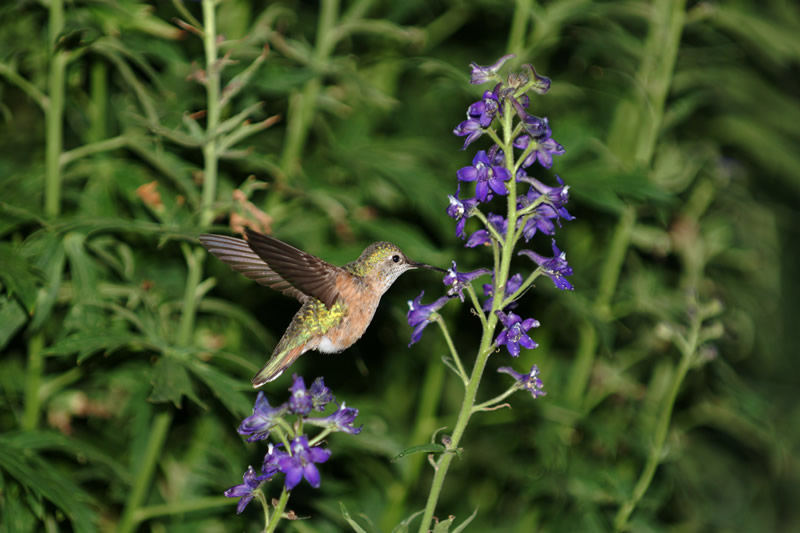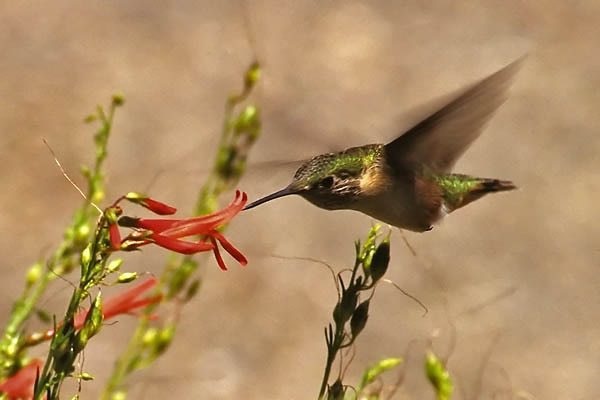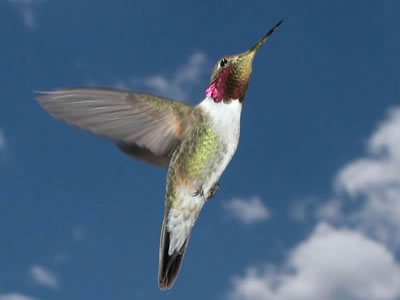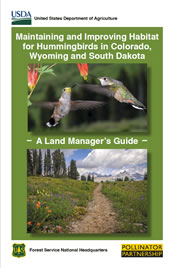Bird Pollination
Birds are very important pollinators of wildflowers throughout the world. In the continental United States, hummingbirds are key in wildflower pollination. In other areas, honeycreepers (Hawaii) and honeyeaters (Australia) are important pollinators. In addition, brush-tongued parrots (New Guinea) and sunbirds (Old World tropics) serve as tropical pollen vectors.
There are 2,000 bird species globally that feed on nectar, the insects, and the spiders associated with nectar bearing flowers.
Bird Flowers
The flowers that are visited by birds and hummingbirds are typically:
- Tubular and have petals that are recurved to be out of the way
- Have tubes, funnels, cups
- Strong supports for perching
- Brightly colored: red, yellow, or orange
- Odorless (birds have a poor sense of smell)
- Open during the day
- Prolific nectar producers with nectar deeply hidden
- Modest pollen producers that are designed to dust the bird’s head/back with pollen as the bird forages for nectar
Hummingbirds have very good eyes and are extremely attracted to red. They thrust their long slender bills deep into the flowers for nectar, withdrawing faces dusted in pollen.
Although a hummingbird weighs between two and eight grams (a penny weighs 2.5 grams), they eat frequently in order to power hearts that pump 1,200 times per minute and wings that beat seventy times each second. To survive, they must eat several times their weight in nectar everyday! For protein, they supplement their sugary diet with small insects.
 The ʻIʻiwi (Scarlet Hawaiian honeycreeper). Public Domain, U.S. Geological Service.
The ʻIʻiwi (Scarlet Hawaiian honeycreeper). Public Domain, U.S. Geological Service.
In the eastern United States, there is only one kind of hummingbird, the ruby-throated hummingbird. In the southwestern states, birdwatchers can find a dozen species of hummingbirds.
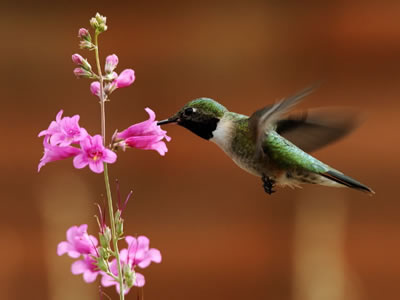 Anna’s Hummingbird feeding on a flower blossom.
Anna’s Hummingbird feeding on a flower blossom.
 Ruby throated hummingbird feeding in a trumpet creeper (Campsis radicans). Photo by T.G. Barnes, University of Kentucky.
Ruby throated hummingbird feeding in a trumpet creeper (Campsis radicans). Photo by T.G. Barnes, University of Kentucky.
For More Information
- Attracting Hummingbirds to Your Garden Using Native Plants (PDF, 3.5 MB) - Growing native plants adds important habitat for hummingbirds and other wildlife. This guide will help you create a hummingbird friendly garden.
- The Migratory Pollinators Program at the Arizona – Sonora Desert Museum - learn more about hummingbirds and their role as pollinators visit.
- Orchids and Hummingbirds: Sex in the Fast Lane (PDF, 578 KB) - Thank you to the Orchid Digest for allowing Celebrating Wildflowers to make this article available. Questions concerning Orchid Digest may be directed to Sandra Svoboda, Editor.
- A good way to help the planet and feed hummingbirds is to recycle materials from your house to make a feeder (PDF).
Bird Fact
 Photo by Migratory Pollinators.
Photo by Migratory Pollinators.
The white wing dove is also an important pollinator. According to the Arizona-Sonora Desert Museum, the doves synchronize their migration into the Sonoran Desert with the reproductive cycle of saguaro cactus. White-winged doves are important to saguaros as pollinators but they are also the main seed predators of saguaros. This is an interesting ecological balance.
Maintaining and Improving Habitat for Hummingbirds
The Forest Service and Pollinator Partnership developed land manager’s guides to provide general information and native plant lists for regions of the United States. While the guides were intended for use by restoration managers, the concepts and planting recommendations apply to anyone who wishes to improve habitat for hummingbirds.


